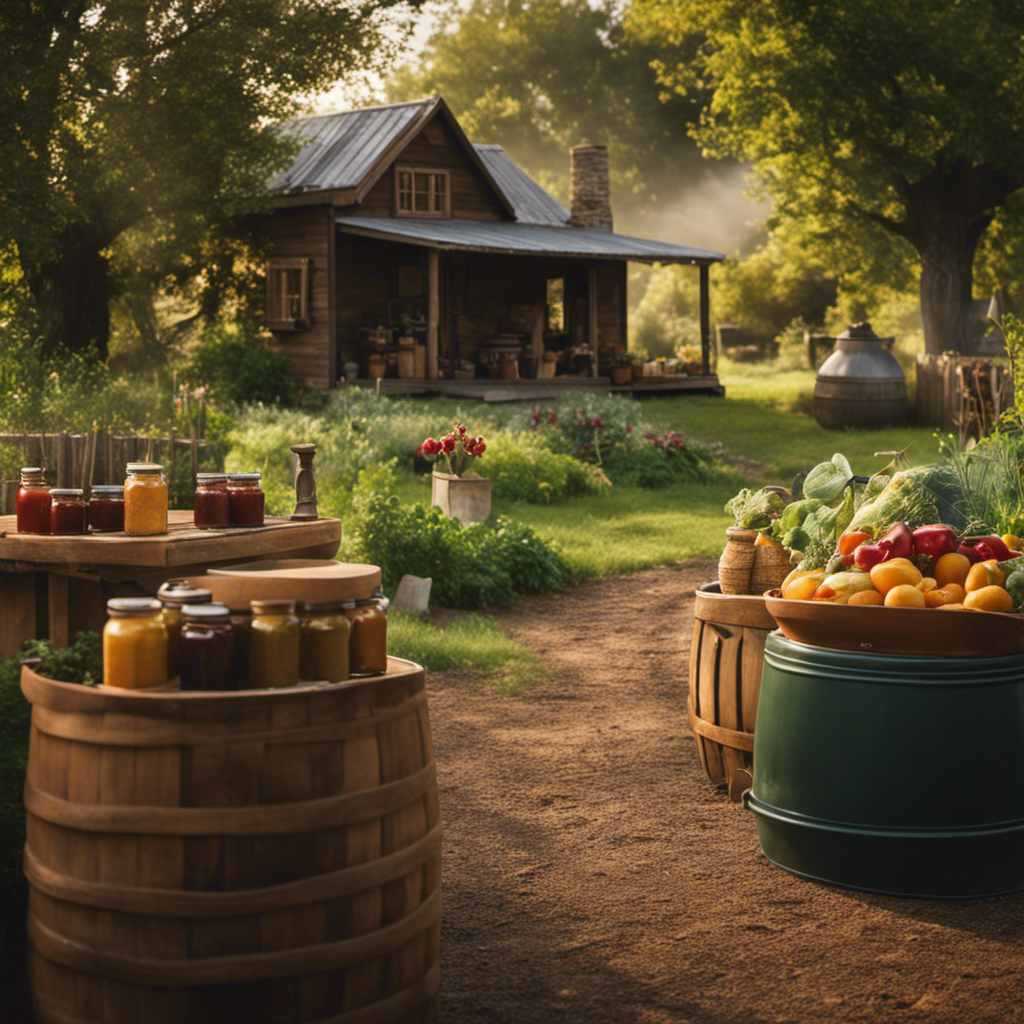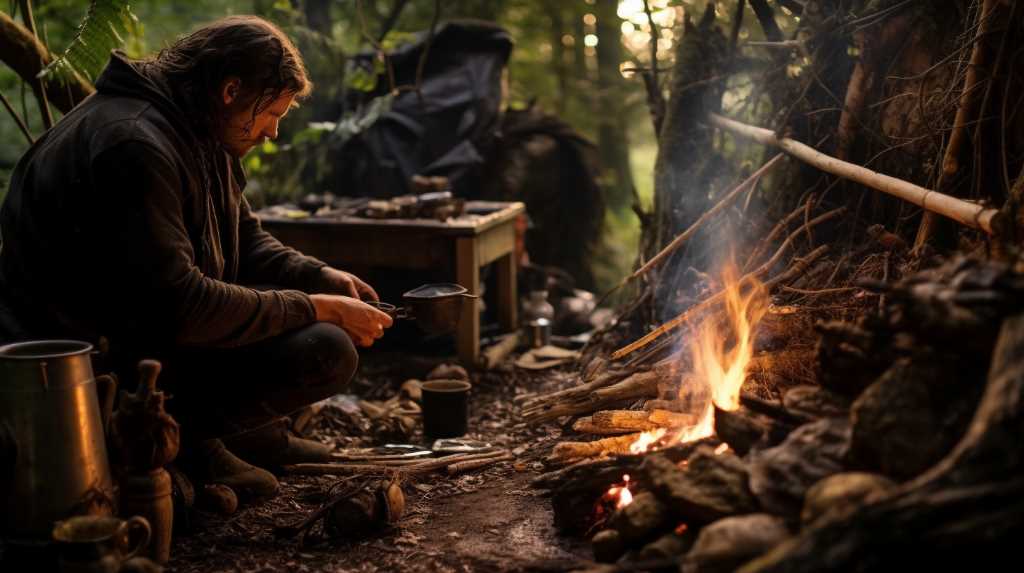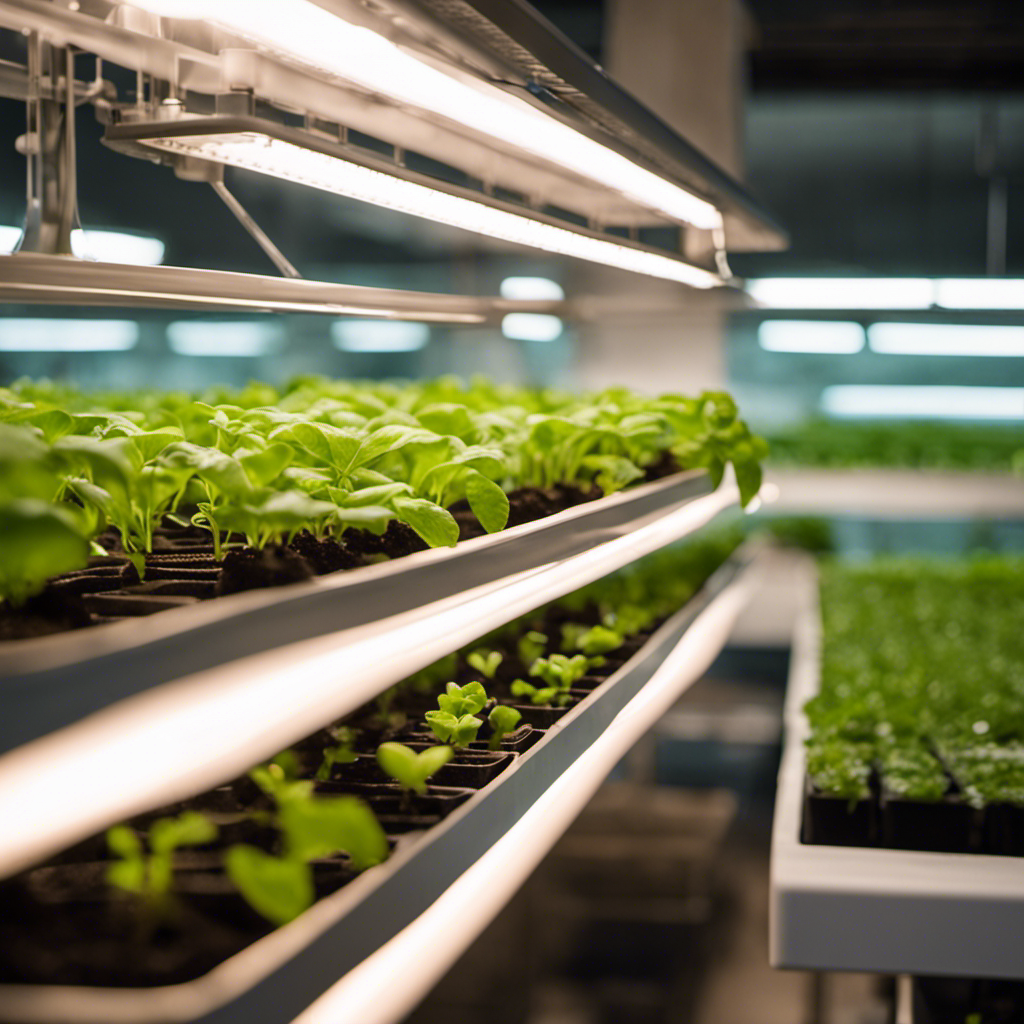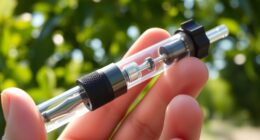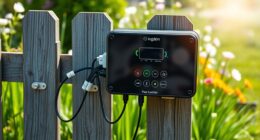To improve pollination through backyard beekeeping, choose a beginner-friendly hive type like Langstroth or top-bar and set it up in a sunny, sheltered spot with access to water. Regularly inspect your hive for signs of pests or disease, guarantee the queen is laying well, and keep the environment clean. Manage honey harvest responsibly to support hive health. If you keep caring and learning, you’ll discover ways to boost your bees’ productivity and pollination benefits even further.
Key Takeaways
- Choose an easy-to-manage hive type, like Langstroth, and set it up properly for healthy bee colonies.
- Conduct regular hive inspections to monitor bee health, brood development, and honey stores.
- Manage pests and diseases proactively to ensure strong, thriving colonies that boost pollination.
- Harvest honey responsibly by removing capped frames and leaving enough for winter bees.
- Maintain a clean hive environment and provide access to fresh water to support optimal pollination.

Ever considered keeping bees in your backyard? It’s a rewarding experience that not only brings fresh honey to your table but also supports local pollination. To get started, you’ll need to understand some basics about hive management and honey extraction. Managing your hive properly helps guarantee your bees stay healthy and productive, while honey extraction allows you to harvest the sweet reward of your efforts.
Hive management is the cornerstone of successful beekeeping. You’ll want to choose the right hive setup, such as a Langstroth or top-bar hive, suited for beginners. Regular inspections are essential; they help you monitor the hive’s health, check for signs of pests or disease, and make sure the queen is laying eggs properly. During inspections, look for capped brood, honey stores, and the presence of pollen. Keeping the hive clean and free of mites or other pests prevents problems down the line. Also, providing your bees with access to fresh water and make certain they have enough space to expand keeps the colony healthy. Proper hive management isn’t just about maintenance; it’s about creating an environment where your bees can thrive, which ultimately results in better pollination for your garden and a more productive hive. Additionally, understanding colony health indicators helps you catch issues early and maintain a strong hive.
When it comes time to harvest honey, honey extraction is straightforward but requires care. Once the honeycomb cells are capped, it’s a sign that the honey is ready. You’ll remove frames from the hive and use a honey extractor—a device that spins the frames to force honey out of the comb. This process minimizes damage to the comb, so you can reuse it later for bees to store more honey. After extraction, strain the honey through a fine mesh to remove any residual wax or debris, then store it in airtight jars. Be sure to leave enough honey in the hive for the bees’ winter needs, as they rely on it for sustenance. This balance between harvesting and hive care is vital; over-harvesting can weaken your colony, while proper management ensures continuous production.
Starting your backyard beekeeping journey might seem overwhelming at first, but with consistent hive management and careful honey extraction, you’ll find it becomes second nature. Not only will you enjoy the tasty dividends, but you’ll also be contributing to local ecosystems by supporting pollinators. Remember, the key is patience and attentiveness—by tending to your hive regularly and harvesting responsibly, you’ll create a thriving environment where bees can flourish, and you can enjoy the fruits of your labor.
Frequently Asked Questions
How Do I Choose the Right Location for My Hive?
When choosing a hive location, focus on proper hive placement and sun exposure. You want a spot that gets morning sun to warm the hive early, promoting healthy bees. Avoid placing it in windy or shaded areas, as these can stress the hive. Make certain good airflow, but shield it from harsh elements. Keep it accessible for inspections and away from predators, making sure your bees thrive and pollinate effectively.
What Safety Precautions Are Necessary for Beginner Beekeepers?
Did you know that over 50% of bee stings happen when beekeepers aren’t wearing protective gear? As a beginner, you should always wear protective gear like a suit, gloves, and a veil to prevent stings. Also, stay pesticide-aware—avoid areas with recent chemical use, and keep your hive away from pesticide drift. These precautions keep you safe and help protect your buzzing helpers.
How Often Should I Inspect My Beehives?
You should inspect your beehives about every 7 to 10 days, establishing a consistent hive monitoring schedule. Regular bee inspection frequency helps you catch problems early, like pests or disease, and guarantees your bees stay healthy. During each inspection, check for signs of strong queen activity, adequate food stores, and overall hive stability. Staying diligent with your monitoring schedule keeps your bees thriving and productive.
What Are Common Signs of a Healthy Hive?
Think of your hive as a thriving city; healthy signs are its lively streets and busy workers. Bee health indicators include a steady brood pattern, active flying bees, and abundant honey stores. If bees are calm and the hive smells sweet, these are good signs. Regular hive maintenance tips, like checking for pests or disease, help keep everything in balance. Spotting these signs means your hive is flourishing and pollination is on track.
Can I Keep Bees in a Small Urban Backyard?
You can keep bees in a small urban backyard, but you need to contemplate urban hive considerations carefully. Small backyard challenges include limited space, neighbors’ concerns, and local regulations. Make sure to check your city’s rules about beekeeping, choose a suitable hive location away from foot traffic, and use barriers if needed. With proper planning, your urban hive can thrive, providing pollination and honey while fitting into your small backyard.
Conclusion
Just as the bees once danced in the gardens of Eden, your backyard can become a haven for these essential pollinators. By starting your beekeeping journey today, you’re not only supporting local ecosystems but also cultivating a sweeter, more vibrant garden. Remember, with patience and care, you’ll nurture your own Little House on the Prairie of pollination. So take the leap—your future thriving hive awaits, ready to turn your yard into a paradise.




